16 Games, Sept. 14/17/18, 2023
566 +2/232\\
Week 2: 88 touchdowns, 7 ATDs
IND@HOU: THIS is a touchdown?
How is this possible? The Colts’ Kylen Granson, wrapped up by Houston safety DeAndre Houston-Carson (30), barely has his feet beyond the 2. He strains, he stretches, he whiffs at the pylon, and he lands a yard or more out of bounds — and yet he is somehow awarded six points. We are dumbfounded.
Without doubt, this ranks among the worst airspace touchdown calls we have ever witnessed — an affront to logic and common sense. Somebody in a review booth thought Granson got maybe half of a lace into the goal line’s airspace for a split second. And THAT, we are asked to believe, is an NFL touchdown?
We’re happy for Gardner Minshew, the QB who made the pass. We like that guy. But the ruling? We are slack-jawed in amazement. Hocus Bogus Rating: 5
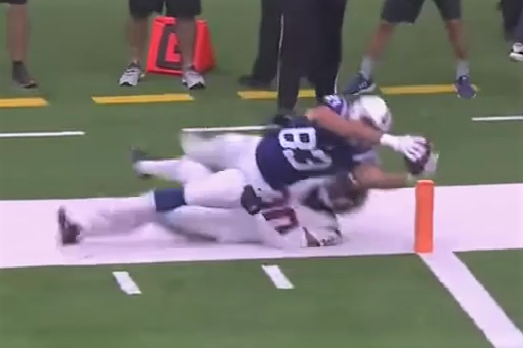
Video and images: Fox Sports
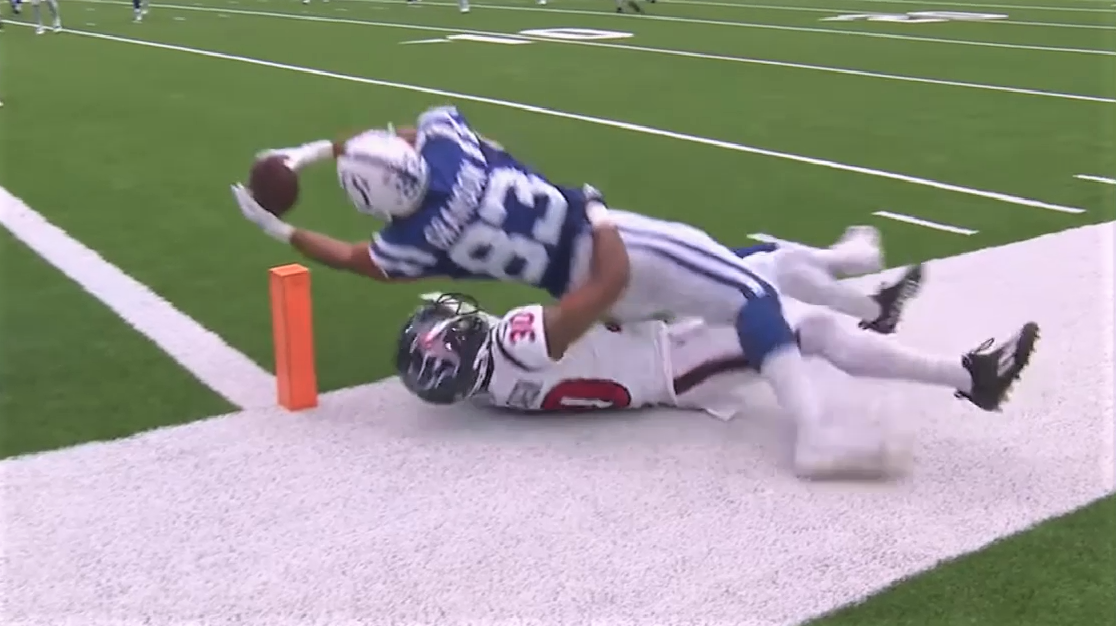
SEA@DET: The pylon paradox
Seahawks WR Tyler Lockett catches a short pass from Geno Smith, dashes toward the corner of the end zone, gets shoved wide by Detroit DB Brian Branch (32), but is able to nick the right pylon before he lands out of bounds.
Is this a touchdown? By the existing rules, yes. As explained in our Puzzle of the Pylon article, the NFL Rulebook states the following in Rule 11 (Scoring), Section 2 (Touchdowns), Article 1 (Touchdown Plays), subpoint (c):
A touchdown is scored when:
(c) A ball in player possession touches the pylon, provided that, after contact by an opponent, no part of the player’s body, except his hands or feet, struck the ground before the ball touched the pylon.
Based on that wording, Lockett did what he needed to do. His 6-yard catch and lunge, occurring on the ninth play of the first drive of overtime, gave the Seahawks a 37-31 win. To further confirm the validity of the score, the Rulebook states in Rule 3 (Definitions), Section 12 (The Field), Article 3 (End Zone) this startling (to us) assertion:
The End Zone is the rectangle formed by the Goal Line, the End Line, and the Sidelines. The Goal Line and the pylons are in the End Zone.
The pylons are IN the end zone? That is a curious assertion. How does that jive with what we read in the Rulebook’s Field Markings section, point 5:
The four intersections of goal lines and sidelines must be marked at inside corners of the end zone and the goal line by pylons. Pylons must be placed at inside edges of white lines and should not touch the surface of the actual playing field itself.
If pylons “should not touch the surface of the actual playing field itself,” to us that means they are out of bounds. And they are. Pylons are clearly positioned on the broad white sidelines (6 feet, 3 inches wide) that surround the “actual playing field” on all sides.
If they are considered “in” the end zone, they are extending the goal line into out-of-bounds territory. That’s where Lockett, like so many ball carriers before him, made contact. Does this make sense? How can banging into an object in out-of-bounds territory qualify for six points?
So the greater question is: Should this be a touchdown? To that we say no — and we’re Tyler Lockett fans at this site. Breaking planes and bumping pylons create ersatz touchdowns, not the real thing. If you want six points, as Fezzik from The Princess Bride might explain it, you should get into the end zone as God intended. Rating: 5
Video and image: Fox Sports
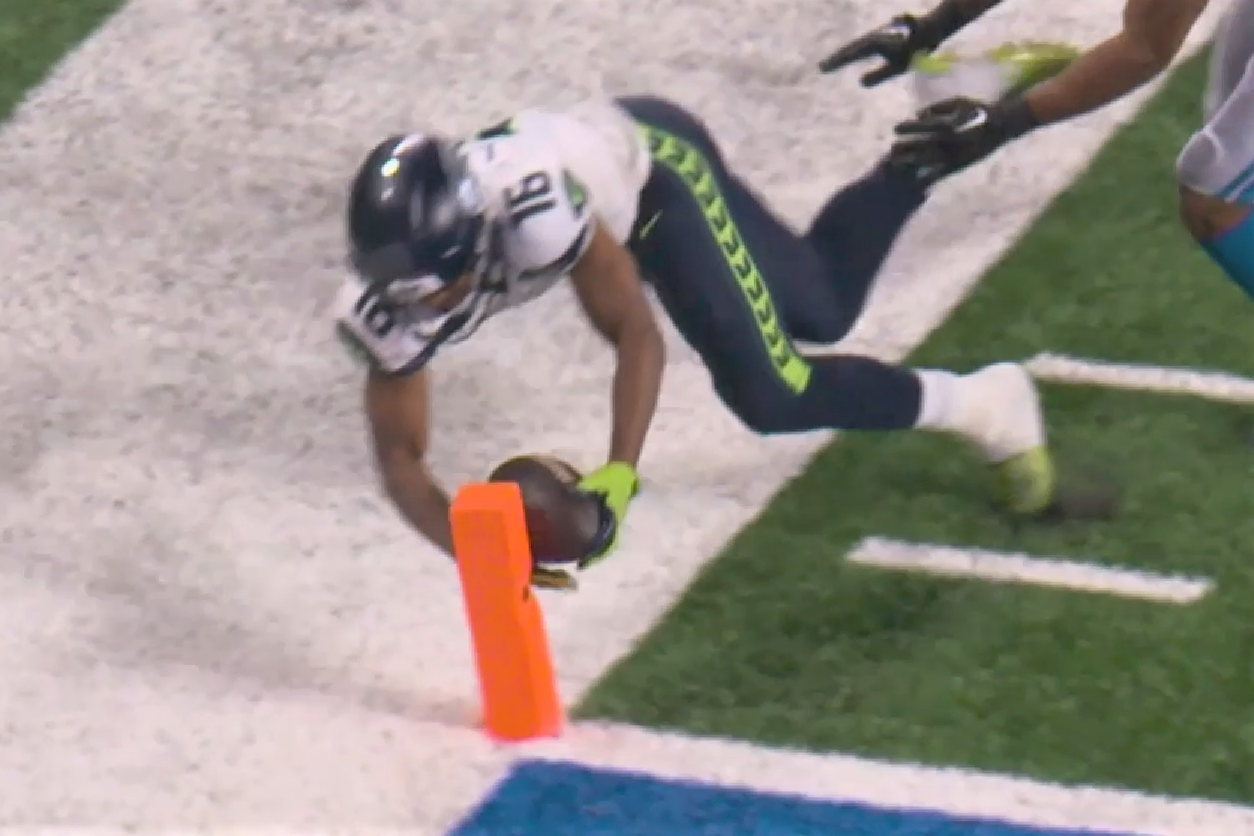
NYG@AZ: The pylon paradox, part 2
Everything we had to say about the Tyler Lockett touchdown above applies here. The Giants’ Saquon Barkley makes a terrific effort to reach and contact the pylon. It’s a moment of high drama as New York is working to overcome an earlier 21-point deficit.
Announcer Adam Amin shows that he has done his homework. At the end of the clip he states “If you have possession of the football, the pylon is inbounds.” That wording is not in the NFL Rulebook, but it is spoken by Rich Eisen in the league’s explanatory video for Scoring Plays. If you watch it, freeze it at the 46-second mark. Is not the pylon on display clearly out of bounds? Then why on earth is waving the ball over a pylon, or hitting one, worth six points? And why is the wording spoken by Eisen not in the rulebook? So many questions.
As mentioned in the Lockett recap above, the rulebook claims “the Goal Line and the pylons are in the End Zone.” As we see it, pylons are positioned on the sidelines. That is out-of-bounds territory. To us, that is not part of the end zone. If it is, then pylons are extending the width of the goal line by four inches on each end. And that just doesn’t seem right. Rating: 4.5
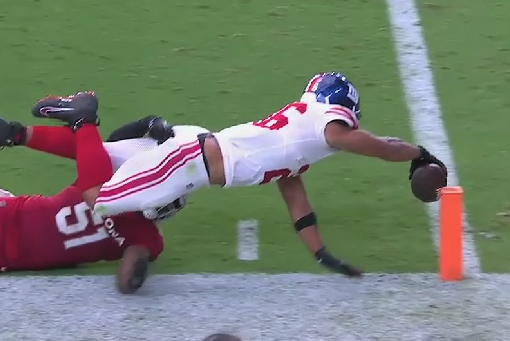
Video and image: Fox Sports
NO@CAR: The pylon paradox, part 3
The assault on pylons (and logic) continued into Monday night’s early game. The Panthers tried all night to get into the end zone. And even though Adam Thielen was given credit for a touchdown on this play, they still never got into the end zone. The parade of no-touch touchdowns goes on. Rating: 4.5
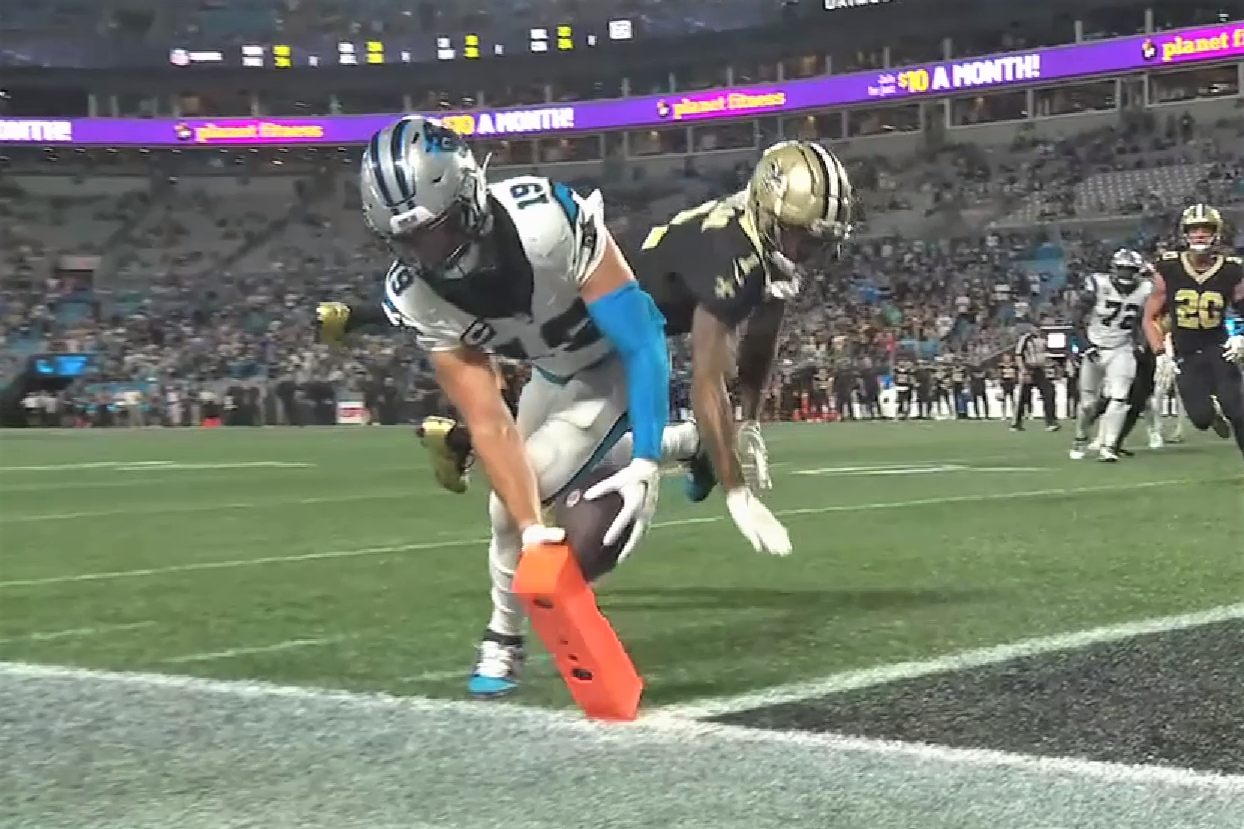
Video and image: ESPN
GB@ATL: Do the pylon stomp
Green Bay’s Jayden Reed can’t reach the end zone, but he doesn’t really have to. Instead, he can run straight out of bounds and, as long as he makes contact with the pylon on his way there, he’s going to collect six points.
Woo hoo! That’s a veteran move for a rookie receiver. Way to put your foot down, rook. Smack dab on the pylon, that magical, out-of-bounds touchdown-generator. Just a touch and you’ve got six.
Meanwhile, it’s another gut punch to fans of logic. What a silly, farcical rule. Rating: 4.5
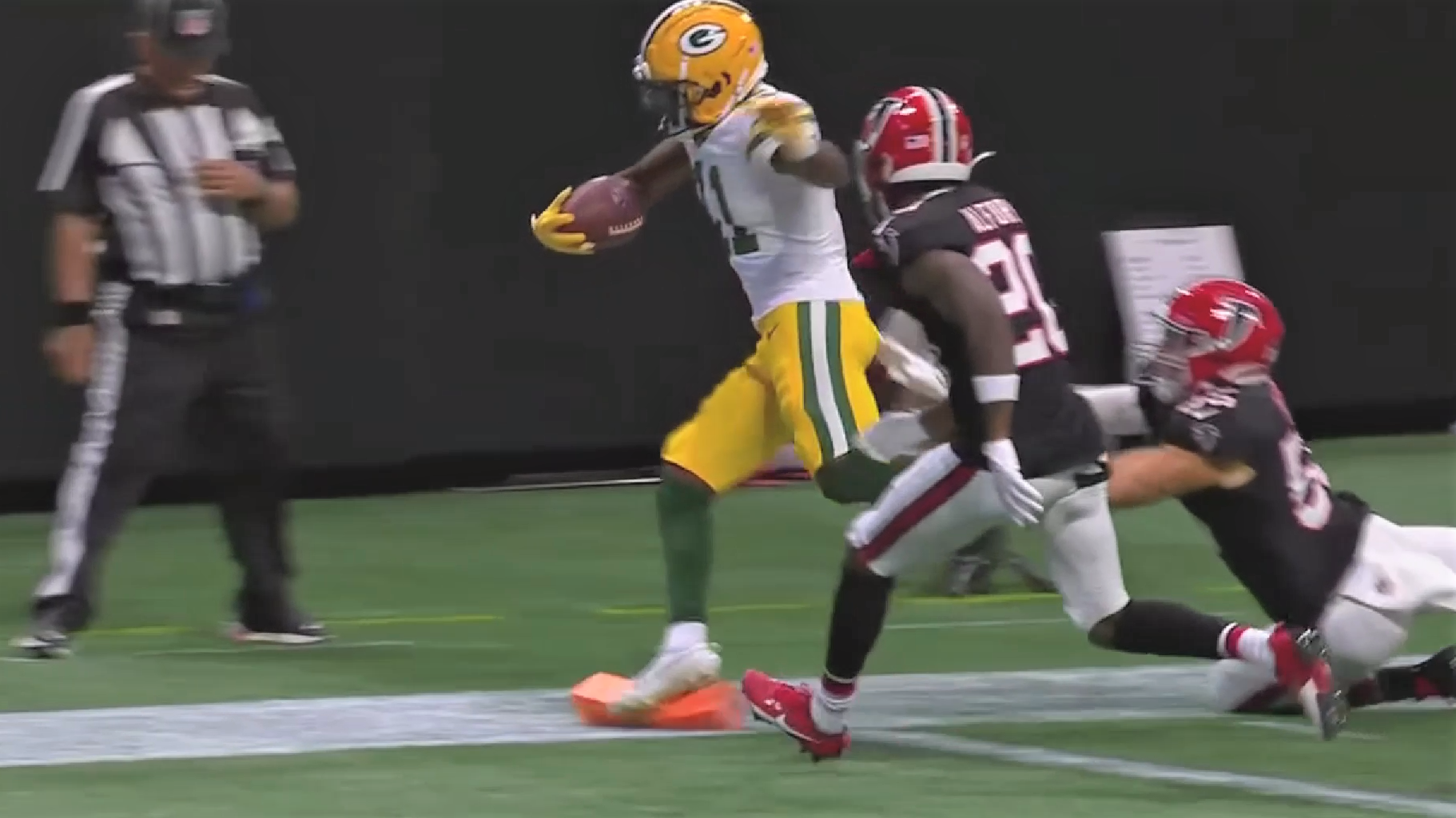
Video and image: Fox Sports
LAC@TEN: Over, but not in
If you try a goal line leap, we figure you better come down and make contact with the end zone. If not, what have you accomplished?
Tennessee’s Derrick Henry is an imposing runner, but because he can’t push his way through the Chargers’ defensive line, we give the victory on this play to the D.
Merely floating atop a heap of large humans is, to us, insufficient for six points. We believe you need to break on through to the other side and make contact with the end zone itself, not just hover in its airspace. Rating: 3.5
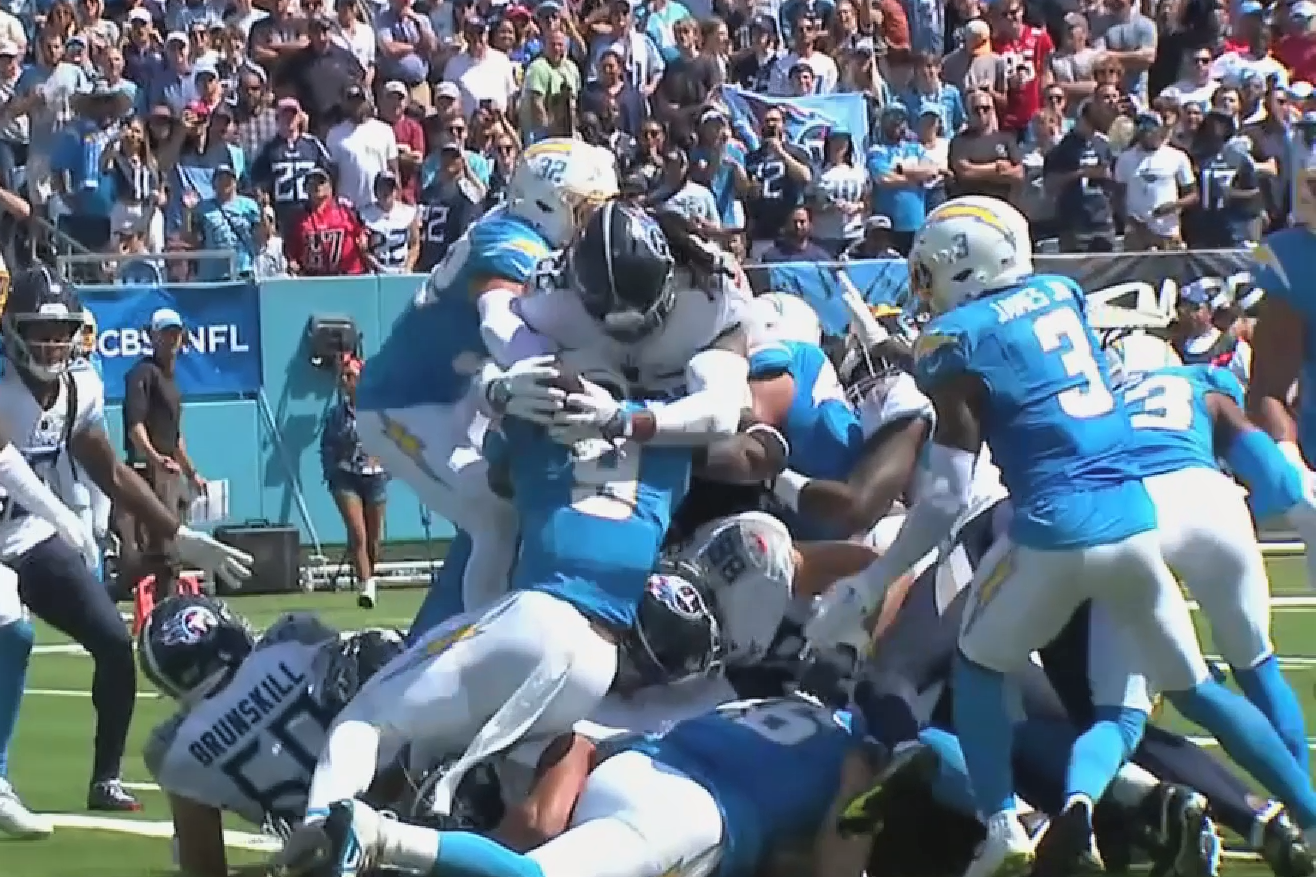
Video and image: CBS Sports
NYJ@DAL: A shift in perspective
If our rule was ever enacted — to earn six points, a ball carrier must make first contact with the end zone when the ball is on or across the goal line — then some plays that initially look like legit touchdowns, even to us, would fall short of that standard.
That happens here when Dallas TE Jake Ferguson meets the requirement for a break-the-plane touchdown. But because his knees and left arm hit the ground in front of the goal line before his right arm (with the ball) makes contact with the end zone, we would rule it’s not a score. If our rule was in force, you can bet defensive coordinators would say the same thing. Rating: 1
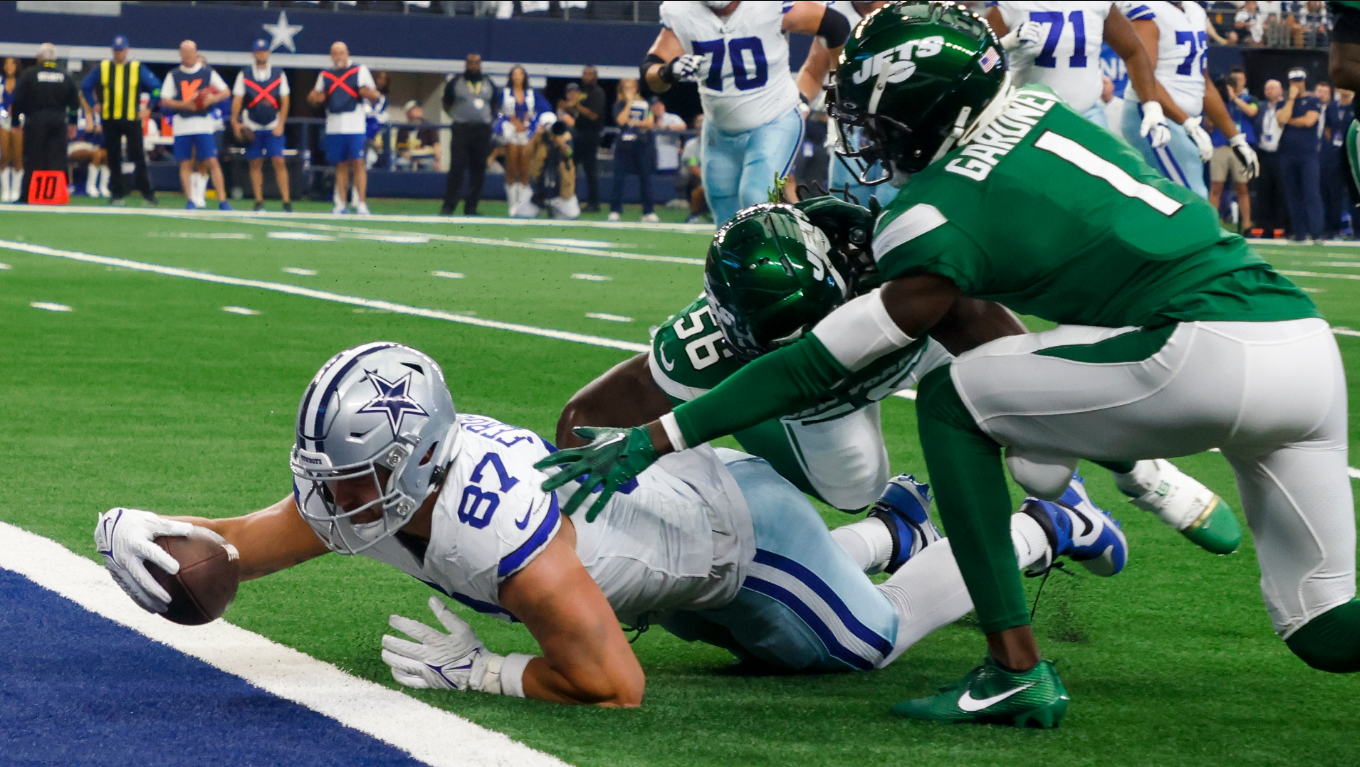
Video and image: CBS Sports
